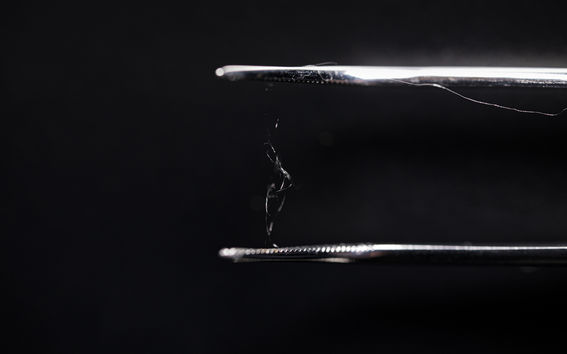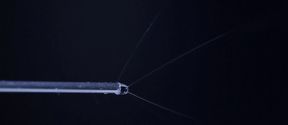Spider silk is created by adding spider DNA to microbes
Researchers studying spiders have produced a synthetic biomaterial that can, in future, be used to make a multitude of products from clothes to car parts.

Achieving strength and extensibility at the same time has so far been a great challenge in material engineering: increasing strength has meant losing extensibility and vice versa. Now Aalto University and VTT researchers have succeeded in overcoming this challenge, with inspiration from nature.
The researchers created a truly new bio-based material by gluing together wood cellulose fibres and the silk protein found in spider web threads. The result is a very firm and resilient material which could be used in the future as a possible replacement for plastic, as part of bio-based composites and in medical applications, surgical fibres, the textile industry and packaging.
According to Aalto University Professor Markus Linder, nature offers great ingredients for developing new materials, such as firm and easily available cellulose and tough and flexible silk as used in this research. The advantage with both of these materials is that, unlike plastic, they are biodegradable and do not damage nature the same way micro-plastics do.
‘Our researchers just need to be able to reproduce the natural properties’, adds Linder, who was also leading the research.
‘We used birch tree pulp, broke it down to cellulose nanofibrils and aligned them into a stiff scaffold. At the same time, we infiltrated the cellulosic network with a soft and energy dissipating spider silk adhesive matrix,’ says Research Scientist Pezhman Mohammadi from VTT.
Silk is a natural protein which is excreted by animals like silkworms and also found in spider web threads. The spider web silk used by Aalto University researchers, however, is not actually taken from spider webs but is instead produced by the researchers using bacteria with synthetic DNA.
‘Because we know the structure of the DNA, we can copy it and use this to manufacture silk protein molecules which are chemically similar to those found in spider web threads. The DNA has all this information contained in it’, Linder explains.
‘Our work illustrates the new and versatile possibilities for protein engineering. In the future, we could manufacture similar composites with slightly different building blocks and achieve a different set of characteristics for other applications. Currently, we are working on making new composite materials as implants, impact resistance objects and other products,” says Pezhman.
The research project is part of the work of the Centre of Excellence in Molecular Engineering of Biosynthetic Hybrid Materials (HYBER).
The research was published in Science Advances 13 September. Link to the article (Science Advances)
More information:
Markus Linder
Professor, Aalto University
+358 50 431 5525
markus.linder@aalto.fi
Pezhman Mohammadi
Research Scientist, VTT
+358 40 163 7835
pezhman.mohammadi@vtt.fi
Christopher Landowski
Research Team Leader, VTT
+358 40 482 0856
christopher.landowski@vtt.fi

Researchers studying spiders have produced a synthetic biomaterial that can, in future, be used to make a multitude of products from clothes to car parts.


